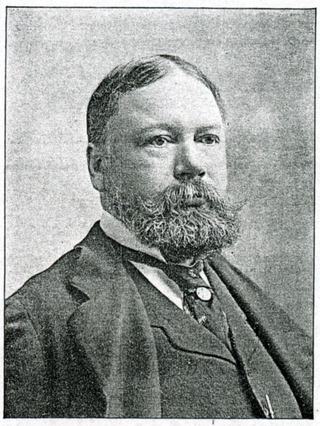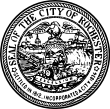In many countries, a mayor is the highest-ranking official in a municipal government such as that of a city or a town. Worldwide, there is a wide variance in local laws and customs regarding the powers and responsibilities of a mayor as well as the means by which a mayor is elected or otherwise mandated. Depending on the system chosen, a mayor may be the chief executive officer of the municipal government, may simply chair a multi-member governing body with little or no independent power, or may play a solely ceremonial role. A mayor's duties and responsibilities may be to appoint and oversee municipal managers and employees, provide basic governmental services to constituents, and execute the laws and ordinances passed by a municipal governing body. Options for selection of a mayor include direct election by the public, or selection by an elected governing council or board.

The administrative divisions of New York are the various units of government that provide local services in the U.S. State of New York. The state is divided into boroughs, counties, cities, towns, and villages. They are municipal corporations, chartered (created) by the New York State Legislature, as under the New York State Constitution the only body that can create governmental units is the state. All of them have their own governments, sometimes with no paid employees, that provide local services. Centers of population that are not incorporated and have no government or local services are designated hamlets. Whether a municipality is defined as a borough, city, town, or village is determined not by population or land area, but rather on the form of government selected by the residents and approved by the New York State Legislature. Each type of local government is granted specific home rule powers by the New York State Constitution. There are still occasional changes as a village becomes a city, or a village dissolves, each of which requires legislative action. New York also has various corporate entities that provide local services and have their own administrative structures (governments), such as school and fire districts. These are not found in all counties.

Most U.S. states and territories have at least two tiers of local government: counties and municipalities. Louisiana uses the term parish and Alaska uses the term borough for what the U.S. Census Bureau terms county equivalents in those states. Civil townships or towns are used as subdivisions of a county in 20 states, mostly in the Northeast and Midwest.

The New York City Council is the lawmaking body of New York City in the United States. It has 51 members from 51 council districts throughout the five boroughs.
The Optional Municipal Charter Law or Faulkner Act provides New Jersey municipalities with a variety of models of local government. This legislation is called the Faulkner Act in honor of the late Bayard H. Faulkner, former mayor of Montclair, New Jersey and chairman of the Commission on Municipal Government.
The borough president is an elected office in each of the five Boroughs of New York City. For most of the city's history, the office exercised significant executive powers within each borough, and the five borough presidents also sat on the New York City Board of Estimate. Since 1990, the borough presidents have been stripped of a majority of their powers in the government of New York City.
A municipal council is the legislative body of a municipality or local government area. Depending on the location and classification of the municipality it may be known as a city council, town council, town board, community council, rural council, village council, or board of aldermen.

Local authority areas in England typically have an executive leader and a cabinet selected from the local council, similar to how the national prime minister and cabinet are selected from Parliament. In contrast, residents of some areas, or groups of areas known as combined authorities, directly elect the executive mayors of their local government.
The state of Michigan is largely divided in the same way as many other U.S. states, but is distinct in its usage of charter townships. Michigan ranks 13th among the fifty states in terms of the number of local governmental entities.
The Yukon Territorial Council was a political body in the Canadian territory of Yukon, prior to the creation of the Yukon Legislative Assembly. Although not a full legislature, the council acted as an advisory body to the Commissioner of Yukon, and had the power to pass non-binding motions of legislation which would be forwarded to the commissioner for consideration.

Merton Elmer Lewis was an American lawyer and politician who served as the 51st Attorney General of New York state.
Local government in New Jersey is composed of counties and municipalities. Local jurisdictions in New Jersey differ from those in some other states because every square foot of the state is part of exactly one municipality; each of the 564 municipalities is in exactly one county; and each of the 21 counties has more than one municipality. New Jersey has no independent cities, or consolidated city-counties.
Thomas P. Ryan Jr. was the 63rd Mayor of Rochester, New York.

James Goold Cutler was a prominent Rochester, New York, architect and businessman, and served as the 48th mayor of Rochester from 1904 to 1907.
Local government in Pennsylvania is government below the state level in Pennsylvania. There are six types of local governments listed in the Pennsylvania Constitution: county, township, borough, town, city, and school district. All of Pennsylvania is included in one of the state's 67 counties, which are in total subdivided into 2,560 municipalities. There are currently no independent cities or unincorporated territories within Pennsylvania. There is only one incorporated town in Pennsylvania, Bloomsburg.

Englewood, New Jersey was incorporated on March 17, 1899. Beginning in 1980, Englewood switched from a Mayor-Council form of government to a modified Council-Manager plan of government in accordance with a Special Charter granted by the New Jersey Legislature. Under this charter, the mayor retains appointive and veto powers, while the council acts as a legislative and policy making body, with some power to appoint and confirm appointments. The City Council consists of five members, each elected for a three-year term. Four are elected from the individual wards in which they live and the other is elected by a citywide vote as an at-large member. The city is divided into four wards which are approximately equal in population. Administrative functions are responsibilities of the City Manager. The six seats in the governing body are elected in a three-year cycle as part of the November general election, with wards two and four both up together, followed a year later by wards one and three, and then the at-large council and mayoral seats. Each ward votes in two of the three years in the cycle, once for its ward seat, in the other year for the two positions voted at-large and one year with no election. The terms begin on January 1 of year after the November election.
Isaac Adler was an American attorney and politician. He was the mayor of Rochester, New York, from 1930 to 1932.

George Washington Aldridge II was a prominent politician from New York state. After serving as the Mayor of Rochester, New York, he became the boss of the Republican Party in Rochester and was influential in state politics until his death. At the end of his career, he served as the Collector of the Port of New York during the presidency of Warren G. Harding.

Hiram Haskell Edgerton was an American businessman and politician who served as the 49th mayor of Rochester, New York from 1908 to 1921.

Clarence Duncan Van Zandt was an American businessman and politician who served as the 50th mayor of Rochester, New York from 1922 to 1926.













